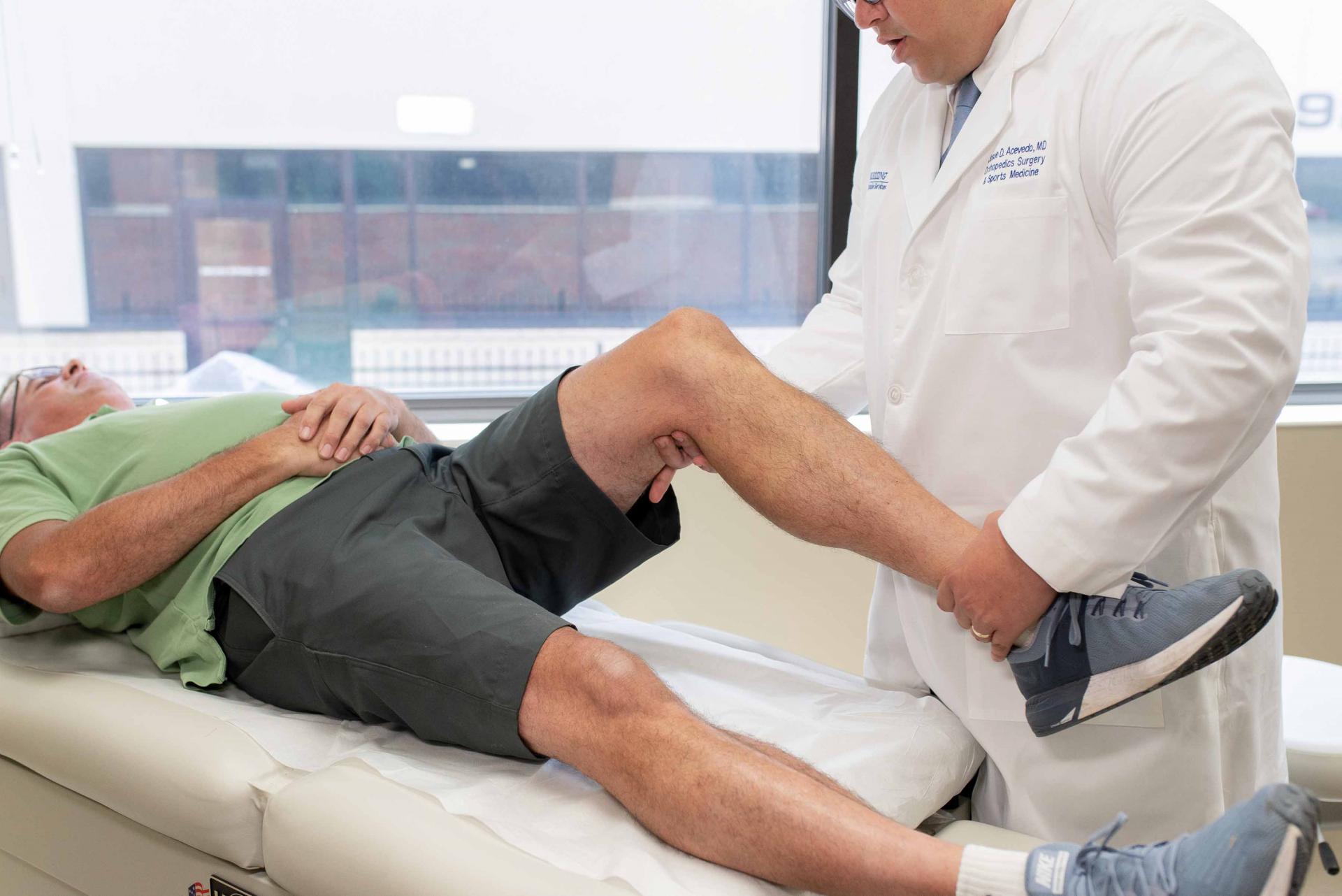Knee replacement surgery replaces damaged parts of the knee joint with artificial components. The orthopedic team at Blessing expertly performs this common joint replacement procedure.
Experience the Blessing Difference: Knee Replacement Surgery
When you come to Blessing for knee replacement surgery, you benefit from:
Convenience: All of the orthopedic care you need is available right here in Quincy, including pre-surgical consultations, surgery and orthopedic rehabilitation.
Advanced pain management: We offer the latest pain control methods. These treatments promote a faster recovery and return to normal life by reducing pain and medication side effects.
Teamwork: The orthopedic specialists at Blessing work together to provide you with the highest quality care. Our physical and occupational therapists guide you through the treatment and rehabilitation process, ensuring a smooth transition back to your normal routine.
Support for caregivers: Our team works with your designated caregiver to ensure he or she has the tools and resources needed to help you get the results you seek after surgery.
Care that focuses on you: At Blessing, we treat our patients like family. You see the same familiar, helpful faces at your appointments and throughout your course of treatment.
Do You Need Knee Replacement Surgery?
You may benefit from knee replacement surgery if you have one or more of these problems:
Osteoarthritis or rheumatoid arthritis in the knee
Difficulty walking or going up and down stairs
Knee pain that is not controlled by over-the-counter pain medications
Knee pain that persists despite nonsurgical treatments such as steroid injections or joint lubricants
Swollen, unstable knee joints
Bone death due to insufficient blood supply (avascular necrosis)
Visit joint replacement to learn how we diagnose joint damage.
Knee Replacement Surgery at Blessing
During knee replacement surgery, you can expect the following steps:
Your doctor removes damaged bone and cartilage from the ends of your thighbone (femur) and shinbone (tibia).
Your doctor replaces the surfaces of these joints with metal prosthetic implants.
A plastic spacer between the metal implants creates a smooth gilding surface.
Depending on your knee issue, your doctor may also replace the back of the kneecap with a plastic implant.
After surgery, you undergo orthopedic rehabilitation to regain strength and stability in the joint.
Because bone is no longer pressing against bone, you enjoy pain-free knee and leg movement again.
Types of Knee Replacement Surgery
Blessing offers the following knee replacement surgeries:
Total knee replacement: Your doctor replaces severely worn bone and cartilage with a prosthetic implant.
Revision total knee replacement: Knee joint implants can last 10 to 15 years. Revision surgery occurs when your doctor replaces worn prosthetic implants with new ones.
Partial knee replacement: If damage is confined to one side of the knee, your doctor may choose to replace only the damaged part, leaving the healthy side intact.

